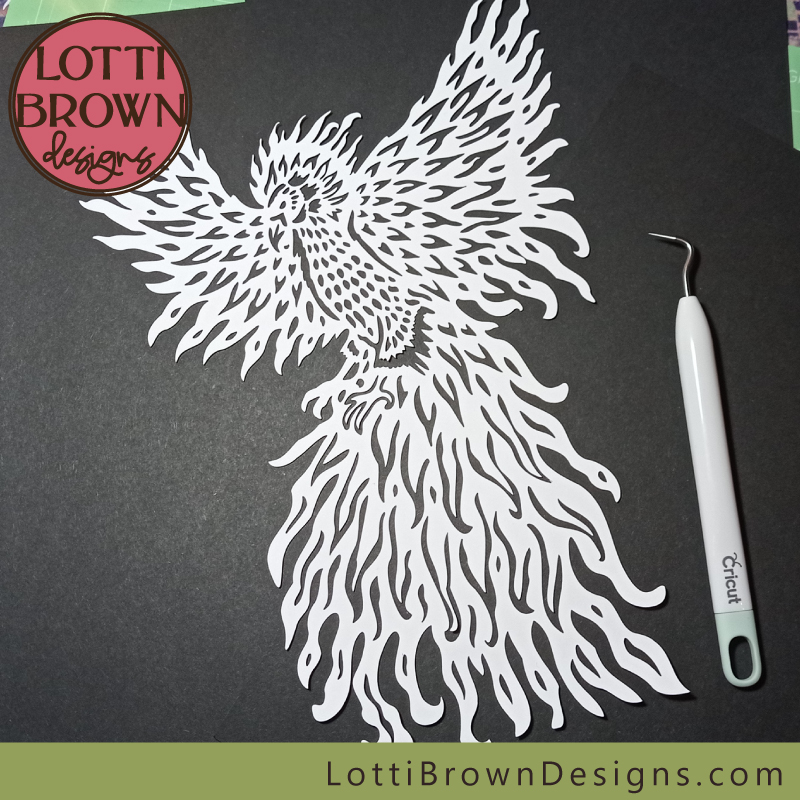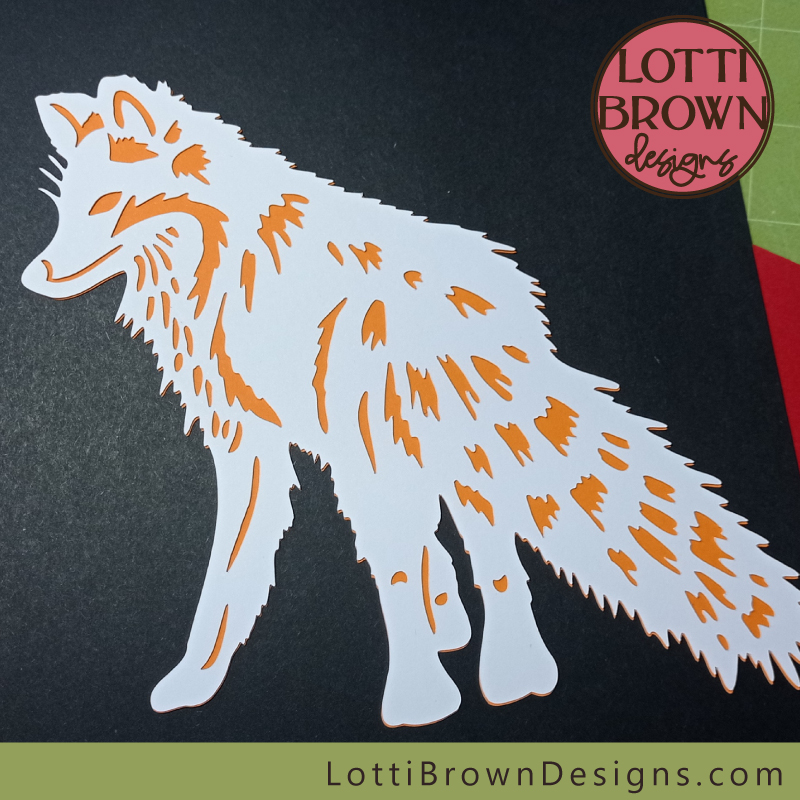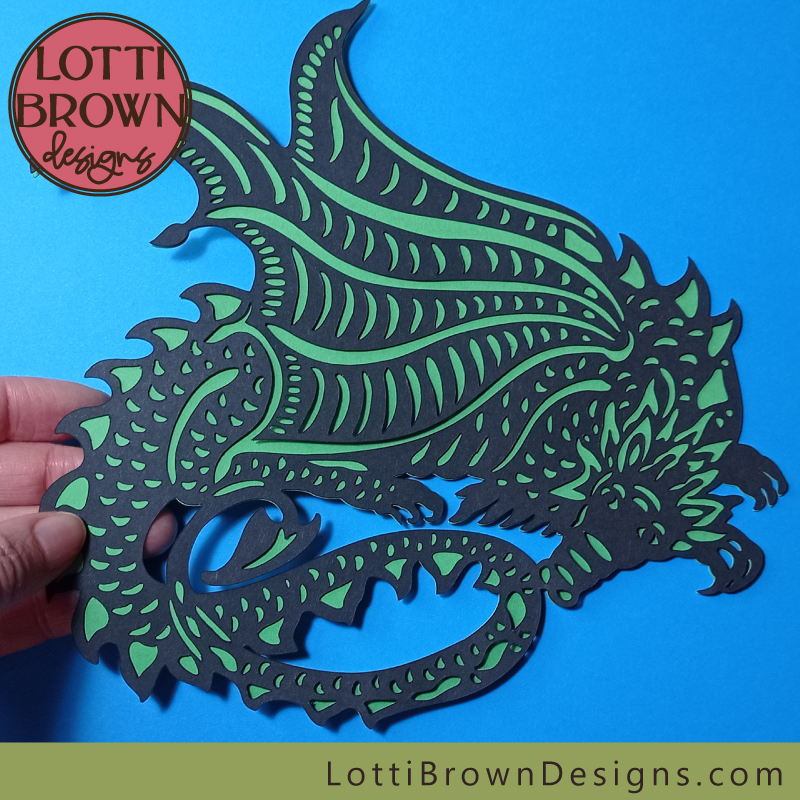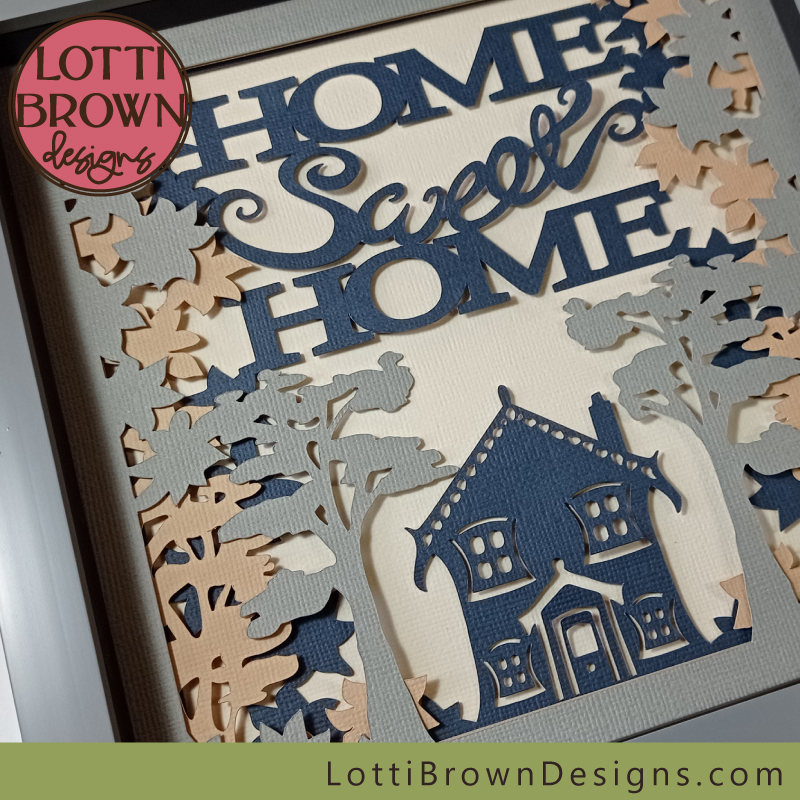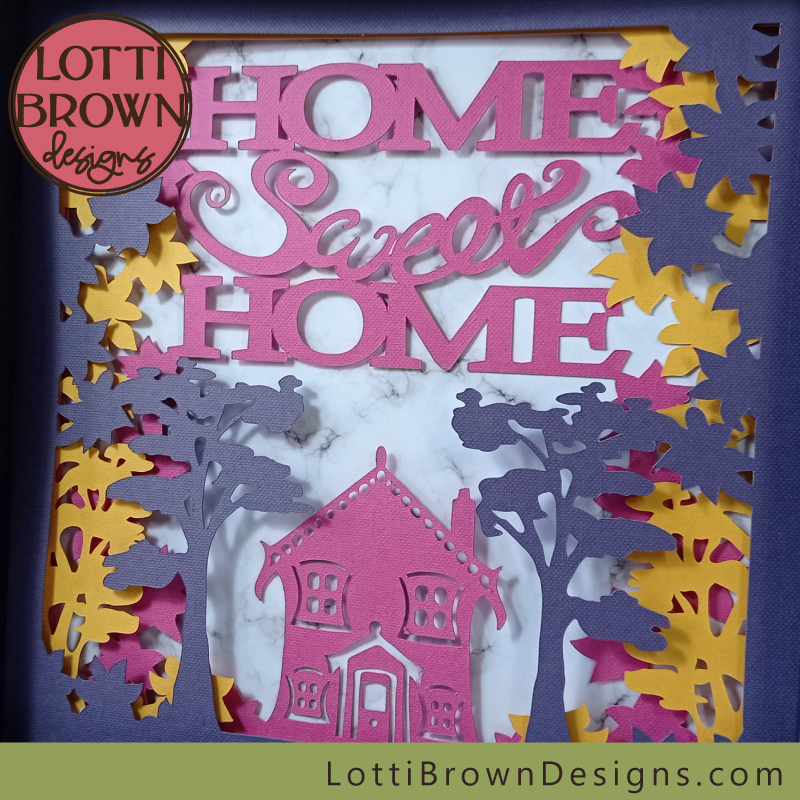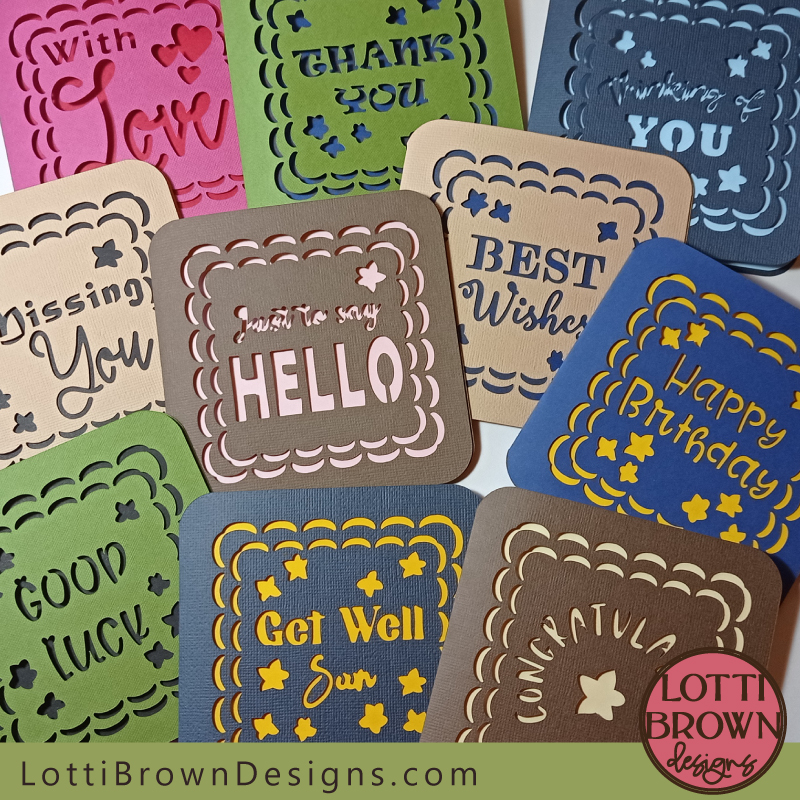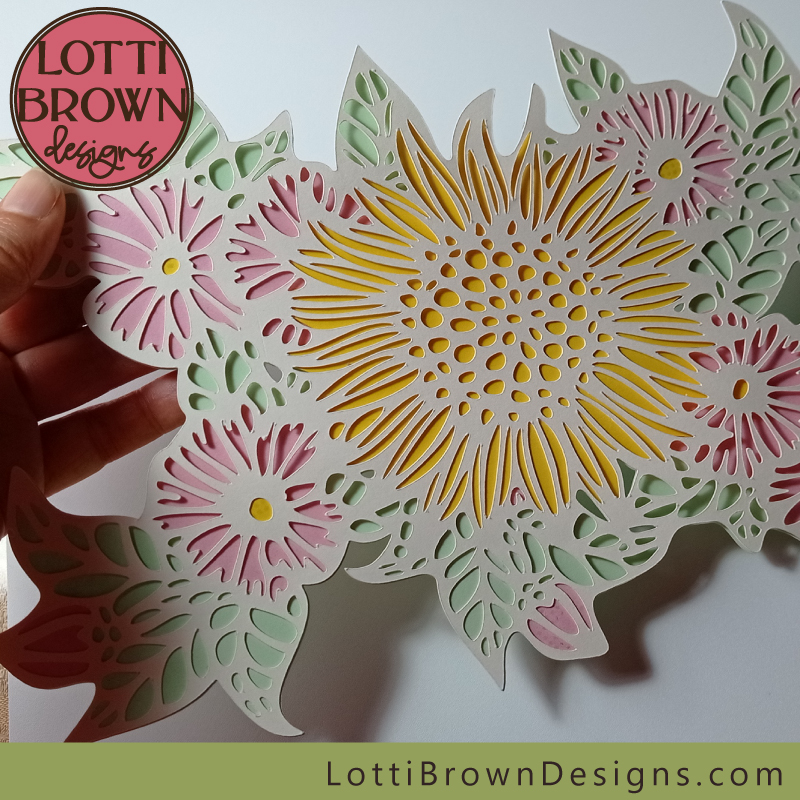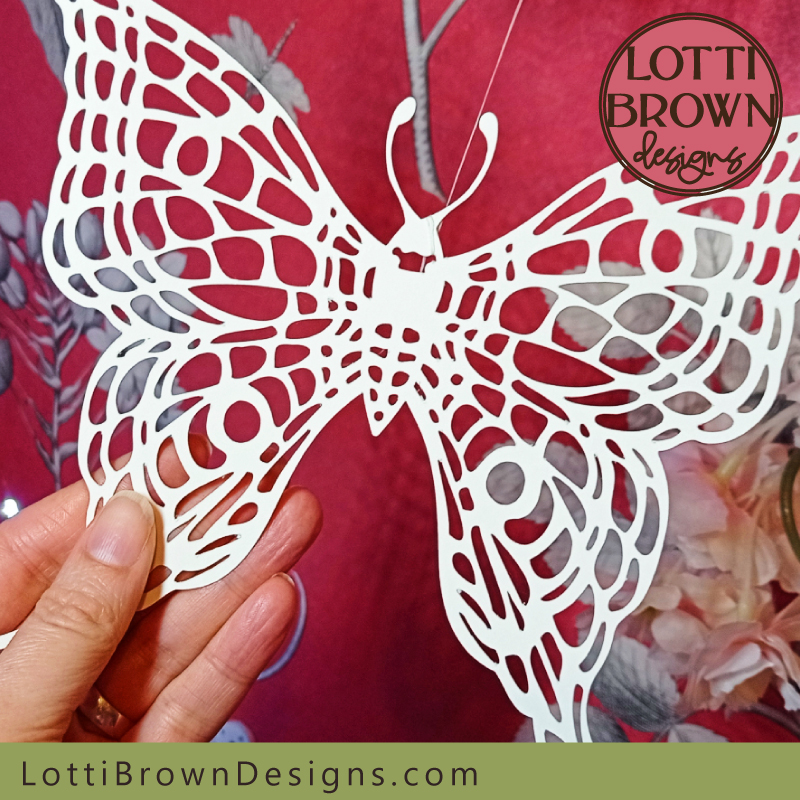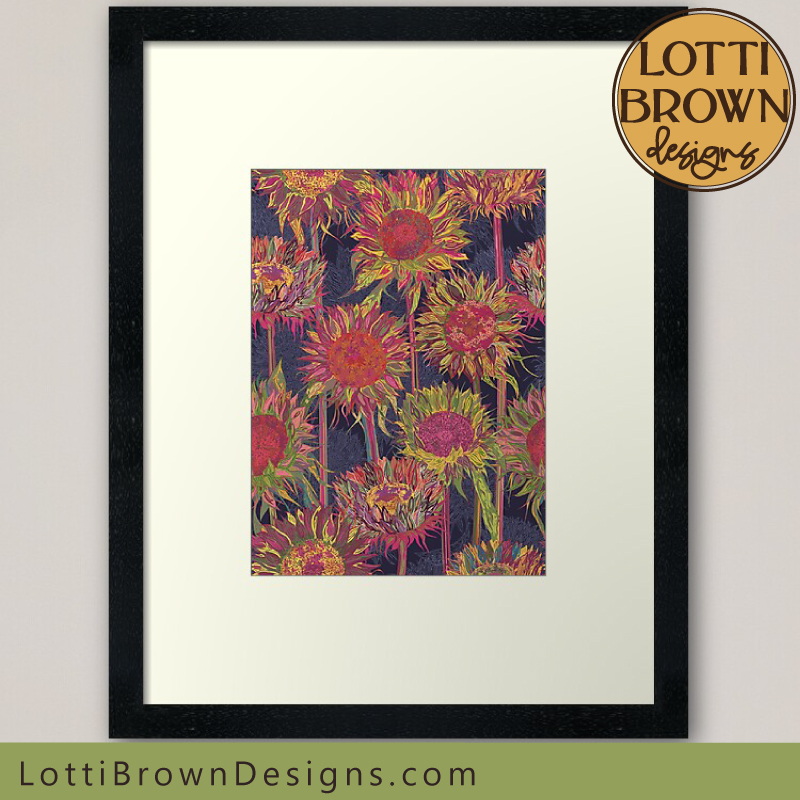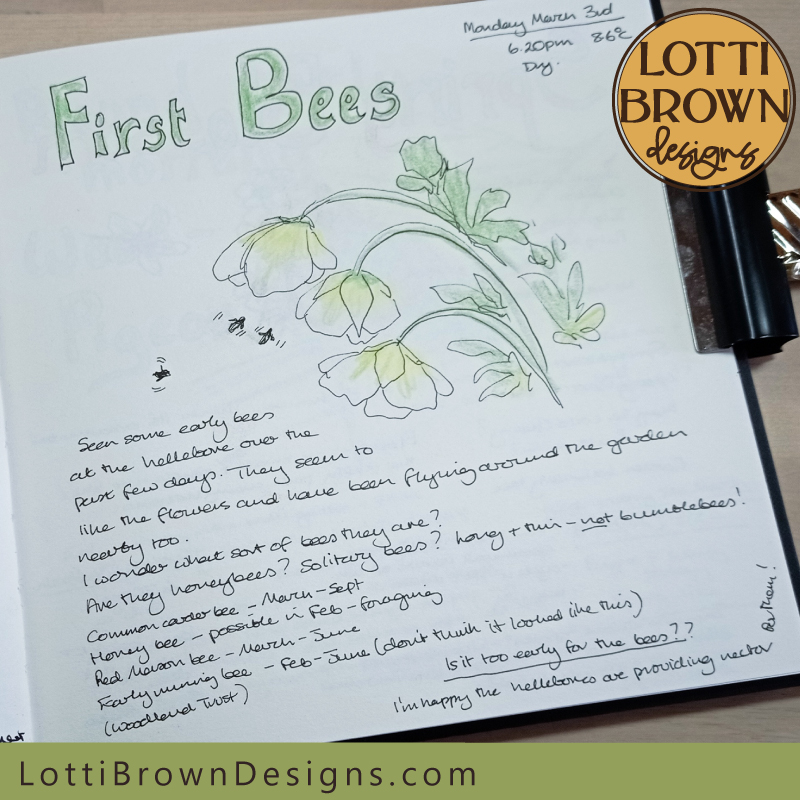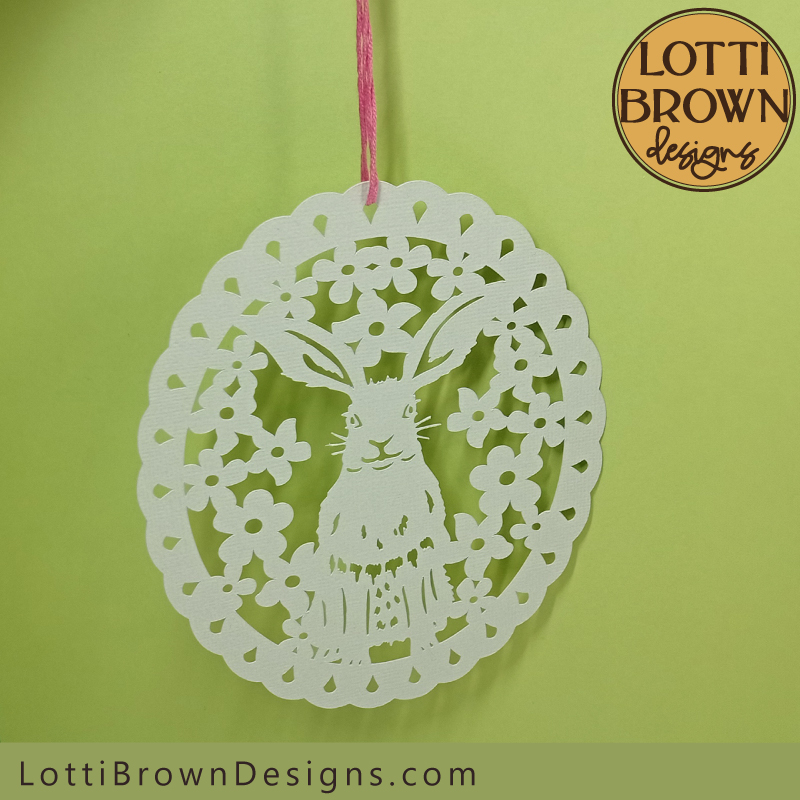SPRING 2025 - I've just completed a WEBSITE REVAMP! Everything is still here but may be in a slightly different place where than you left it and there's also lots of new sections, so if you're having trouble finding something in particular or you spot something that's not working as it should, please do get in touch and I'll do my best to help!

Cutting Cardstock with Cricut
- Home
- SVG files
- How to Use a Cricut
- Cutting Cardstock
My tips and tricks for cutting cardstock with Cricut – from my own experience with my Cricut Maker – including:
- my best cardstock for Cricut
- the best Cricut blade for cardstock
- how to weed cardstock
- removing cardstock from a Cricut mat
- and Cricut cardstock for intricate cuts…
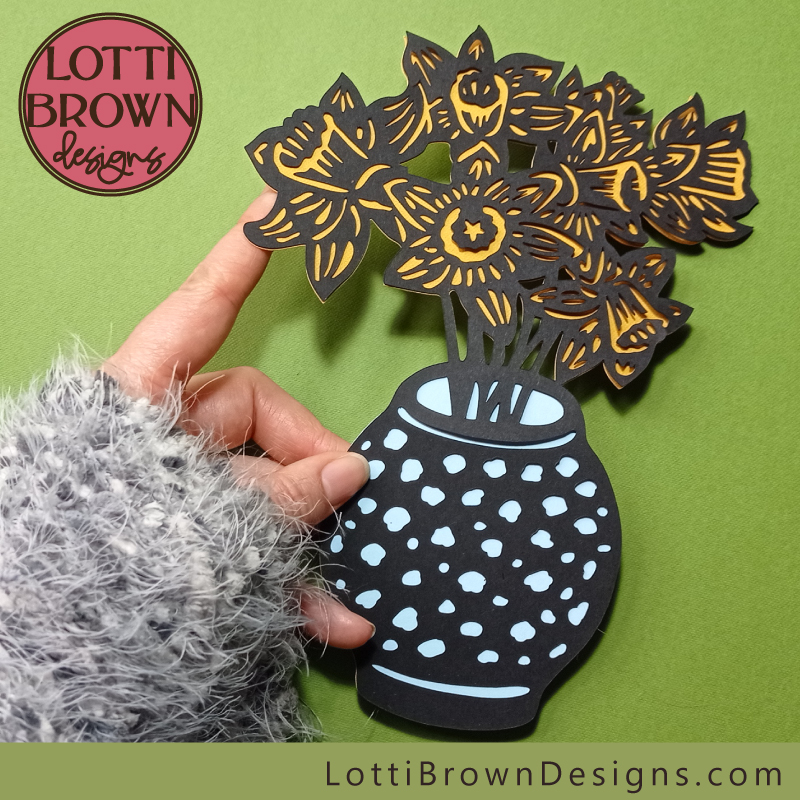 Making even intricate cuts in cardstock with my Cricut Maker cutting machine
Making even intricate cuts in cardstock with my Cricut Maker cutting machineNow that I’ve had my Cricut Maker cutting machine for several months and I’ve cut lots of different cardstocks, I wanted to share with you my own experiences of cutting cardstock with my Cricut – what I’ve found works, what doesn’t work so well, which brands or types of card I’ve tried and preferred, and all my own best ways of working with cardstock with my Cricut Maker.
Best Cardstock for Cricut
I use several different types of cardstock with my Cricut – some work better than others, and some are better suited to certain roles than others…
Best all-rounder basic cardstock
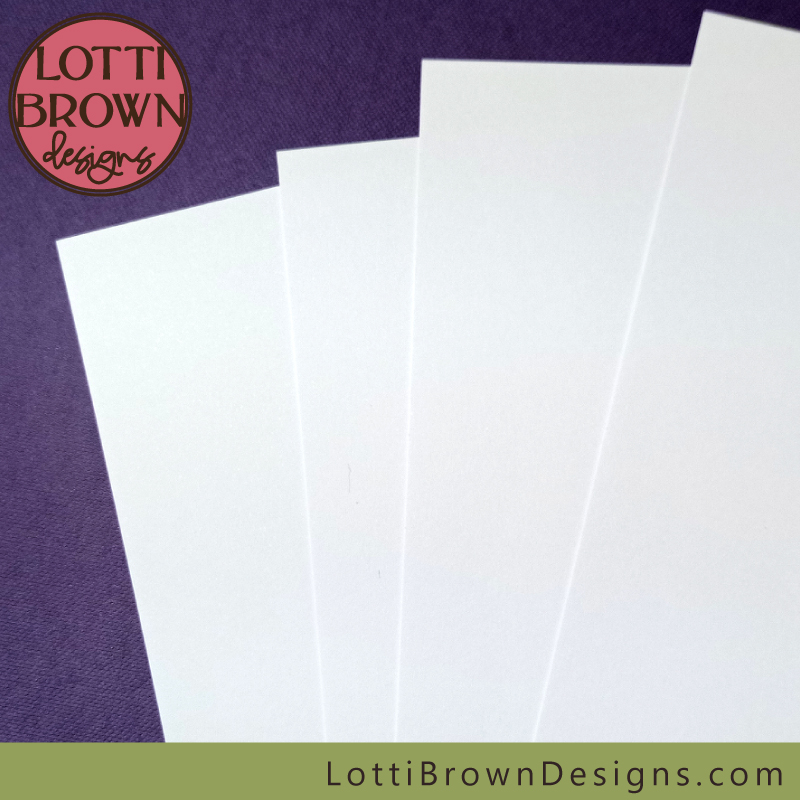 If you want a basic lightweight white card, I think you can't go wrong with this
If you want a basic lightweight white card, I think you can't go wrong with thisMy favourite basic cardstock is a very smooth white card, just 160gsm (approx. 60lbs - I'll cover this in a second!), so it’s quite lightweight. You can cut it on the blue Cricut mat or the standard green mat. It works great for basic cuts and for even my most intricate cuts (normally just on the ‘lightweight cardstock’ setting with default pressure).
The brand I use is Eastlight, A4 Premium 'High' White Card, Smooth, 160gsm (I get it from Amazon in the UK).
This is lovely card and I love the way it cuts even for intricate papercuts, but it is quite lightweight and sometimes we do want a little more structure to our papercrafts.
I'll share some more favourite cardstock types in a minute...
Understanding Cardstock Weights
In the UK & Europe, we use the metric system for measuring the weight or ‘thickness’ of paper or card. We measure by GSM (grams per square metre) - sometimes labelled as g/m2.
On this page, I talk about cardstock varying between 160gsm and 300gsm. The smaller number means a more lightweight paper or card, and a larger number is a heavier-weight or thicker card.
So the 160gsm is a cardstock like a lightweight card or a heavyweight paper. The 300gsm cardstock is considerably more thick and stiff.
In the USA, there is a similar system, but it uses a measurement in pounds (lbs). This uses the ‘basis weight’ which is the weight in pounds of a ream of paper (500 sheets). So again, the smaller number correlates to a lighter-weight paper and the larger number is more heavy-weight and thick.
- So the lightest 160gsm cardstock correlates to approximately 60lbs card…
- And the 216gsm correlates to approximately 80lbs cardstock…
- While the heavier 300gsm cardstock correlates to approximately 112lbs cardstock.
Smoothly Does It!
For me, the thing to look out for when cutting cardstock with Cricut is the smoothness of the card – I’ll try and explain what I mean…
Choosing a cardstock for cutting with your Cricut
The blade seems to cut very well through very smooth paper – by ‘smooth’, I mean ‘not pulpy’. By this, I mean that when you look at the paper surface, you can’t really see the fibres that make up the paper.
I have some other craft paper, but unfortunately, it is quite pulpy, and although it’s nice paper, it doesn’t cut that well in the Cricut, especially for anything at all intricate.
I don't know how well it's photographed, below, but this is a generic craft card/paper I had before I got my Cricut. You can see that it's quite 'pulpy', you can see the fibres of the paper on the surface and it feels a little rough to touch.
When you're handling your cardstock, start to look a little more closely at the surface - can you see the fibres? Does it look 'rough' or 'smooth'? If you've been cutting the cardstock with your Cricut, did it cut well or not? You'll start to build up your own ways of recognising paper textures and how they'll cut in your machine...
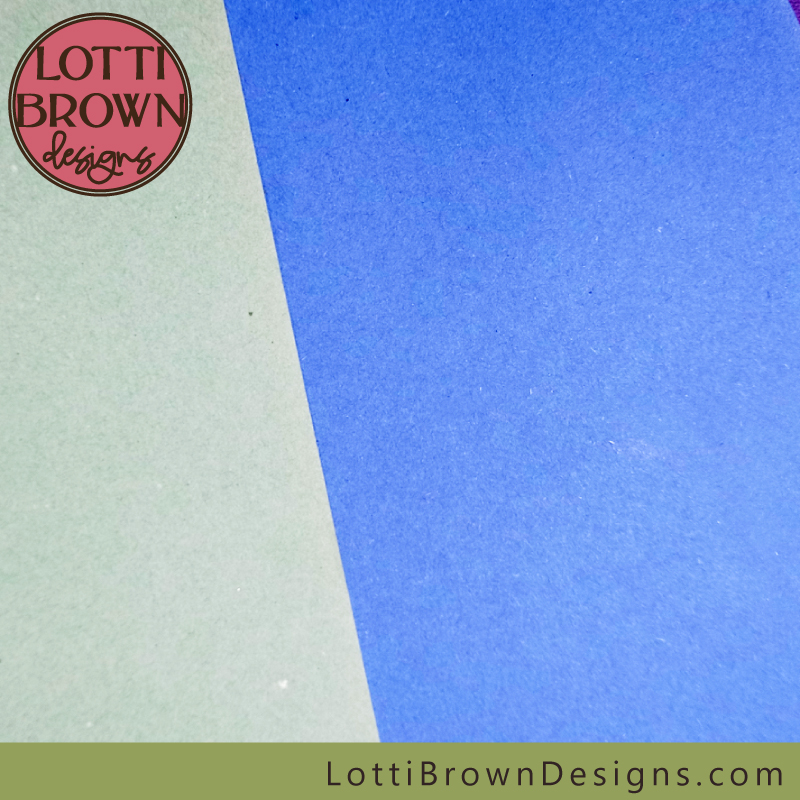 Simple shapes would cut fine with this 'pulpy' craft card, with a Cricut, but it might struggle with anything at all intricate
Simple shapes would cut fine with this 'pulpy' craft card, with a Cricut, but it might struggle with anything at all intricateSome craft papers and cardstock can work well for simple cuts – I have a set of 160gsm cardstock that’s reasonably smooth in a lovely array of colours and I like to mix and match with better quality paper or cardstock according to how detailed your cut is. Normally, for my cardstock projects, I’ll have the background in the coloured craft card (that’s not quite so smooth) and the detailed part in a smoother cardstock.
I’ve also noticed that different colours can seem to be more or less ‘pulpy’ even within the same pack – and so certain colour cardstock from the same pack does seem to cut better with the Cricut than others. I’ve also noticed that the paper and cardstock that is more pulpy does seem to stick more strongly to the Cricut mats and leave behind an annoying residue.
TIP: most cardstock seems to have a slightly smoother side, work out which it is (it may only be a slight difference) and stick that smooth side down to your mat, to avoid as far as possible all those ‘bits’ of card left behind on the sticky.
The black cardstocks seem to be the worst at leaving residue behind. I always have to wash my mat after using black card, even good-quality black cardstock.
The brand of coloured cardstock I’ve been using is Dalton Manor 160gsm coloured cardstock (ordered from Amazon UK). It’s worked out great for most basic cuts and even some quite intricate ones, but can be a little temperamental at times for more detailed or intricate cuts. It doesn't look particularly pulpy and feels pretty smooth to touch, but some colours don't seem to cut so well as others. Still, it's not over-expensive, the colour choices are great and it's great for the simpler cuts or where you want a smooth finish.
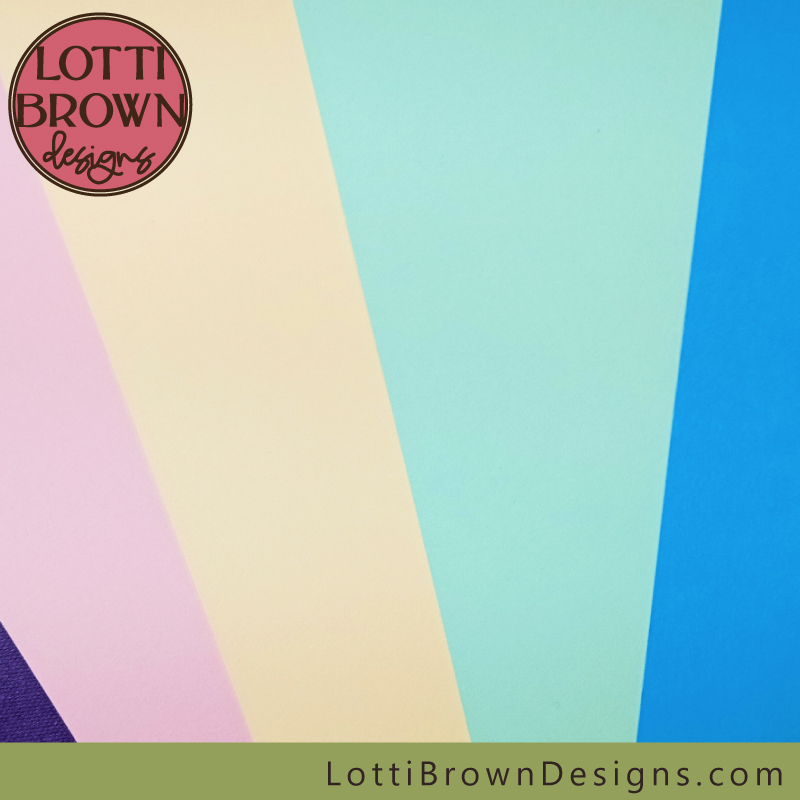 Nice range of colours!
Nice range of colours!I also use black 160gsm cardstock from Clairefontaine Trophee (Amazon UK) which I find is pretty good for most intricate or detailed cuts, but would perhaps avoid only if there’s lots of very small detail.
This card does look quite pulpy but seems to keep its structure well when cut, without tearing. I've been quite intricate with this cardstock and it held up.
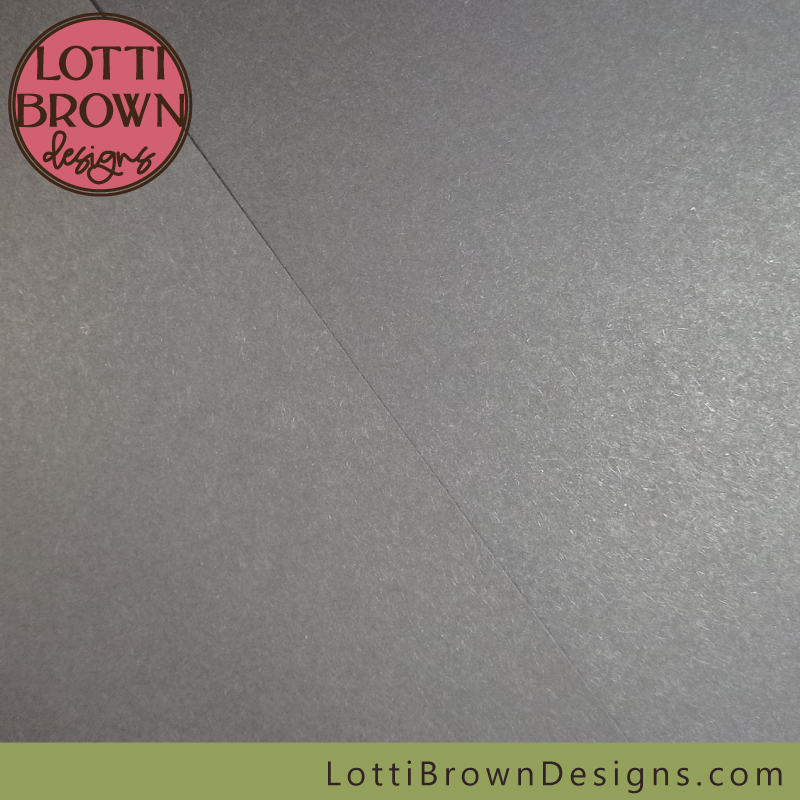 Black cardstock - you can see the fibres here but it does cut quite well
Black cardstock - you can see the fibres here but it does cut quite wellI’ll tell you my go-to cardstock for cutting intricate detail with my Cricut in just a minute…
But first, just an important word of distinction around looking for ‘smooth’ card – the distinction here is between 'smooth' (or 'solid') and 'pulpy'– and not between smooth and textured cardstock. There’s some great textured card that I believe is a contender for the best cardstock for Cricut.
Shall we look at that next..?
Best Cardstock for Cricut
Like I said, my first choice for basic and intricate cuts will always be the 160gsm smooth white card, especially as it's very economically priced for those on a budget...
But for special projects, including your more intricate cut projects, try some textured card.
I’ve tried the Sizzix ‘Surfacez-Cardstock’ textured sheets, 216gsm (80lb) and also Cricut’s own cardstock (also 216gsm/80lb). I thought both were excellent quality.
They were very ‘solid’ and kept their shape fantastically when cutting even intricate cuts – no ‘pulp’ here!
This card is a little heavier duty than my smooth white basic cardstock (216gsm compared to 160gsm), which does make it a little more sturdy and suitable for projects like shadow boxes or cardmaking.
I’ve tried the Sizzix ‘neutrals’ pack and a few of the different coloured packs, and the Cricut ‘jewel’ pack and thought both Cricut and Sizzix cardstocks were both equally good.
A small word of warning for the Sizzix cardstock, though - all the colours I've tried cut fantastically, even on intricate work, except for the black and white cardstocks - these I have never got to cut nicely on anything intricate - the interior of the card seems too 'fluffy' to cut nicely and on small detail it all just sort of disintegrates - if you find their darkest greys and their cream and palest greys, blues, etc. they do cut fine again. I definitely advise you keep the Sizzix black and white cardstocks for more basic cuts.
I think the texture is a little more pronounced on the Sizzix card, with a ‘woven’ effect, which looks quite classy – but depending on your project, could be a bit of a distraction. The texture of the Cricut card was more subtle looking, I thought.
So either the Sizzix or Cricut cardstock I would, personally, rate as the best cardstock for Cricut and cutting machine projects, especially for intricate or ‘best’ projects.
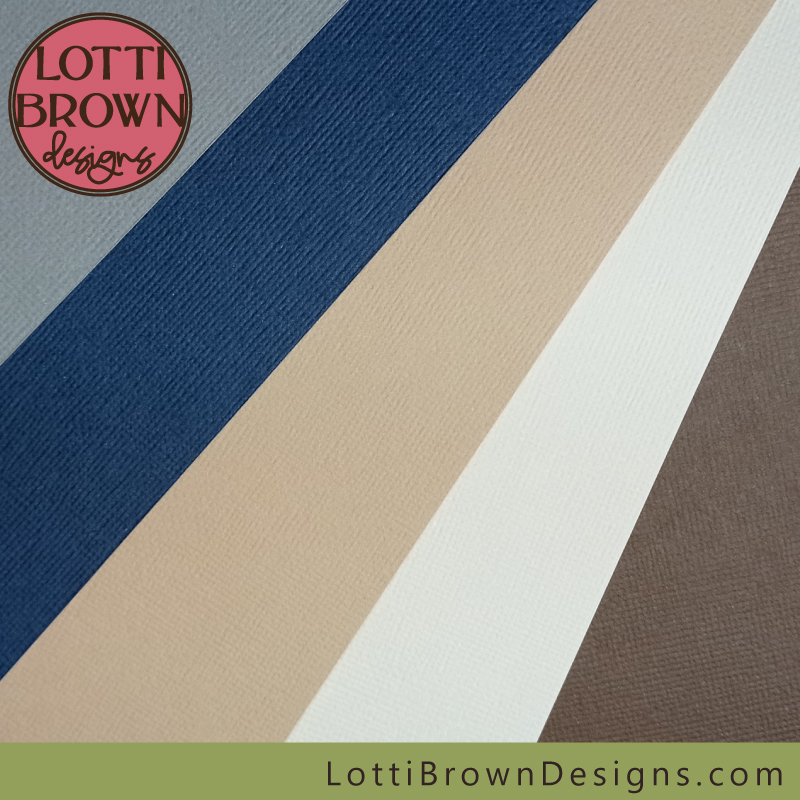 Sizzix 'neutrals' cardstock - 'Surfacez-Cardstock' textured sheets 216gsm - not all colours shown
Sizzix 'neutrals' cardstock - 'Surfacez-Cardstock' textured sheets 216gsm - not all colours shown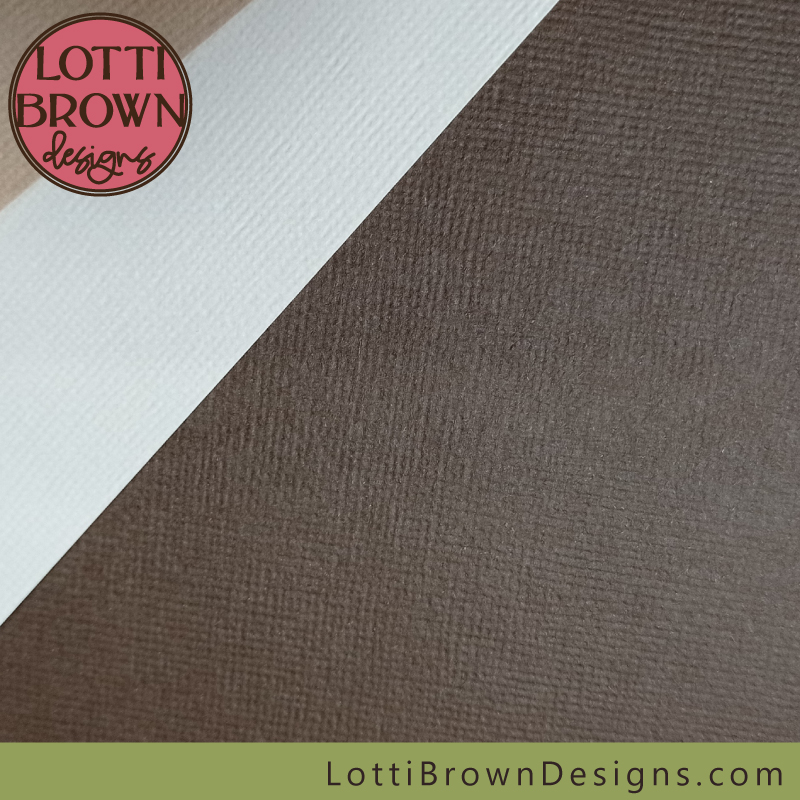 A closer look at the Sizzix cardstock texture
A closer look at the Sizzix cardstock texture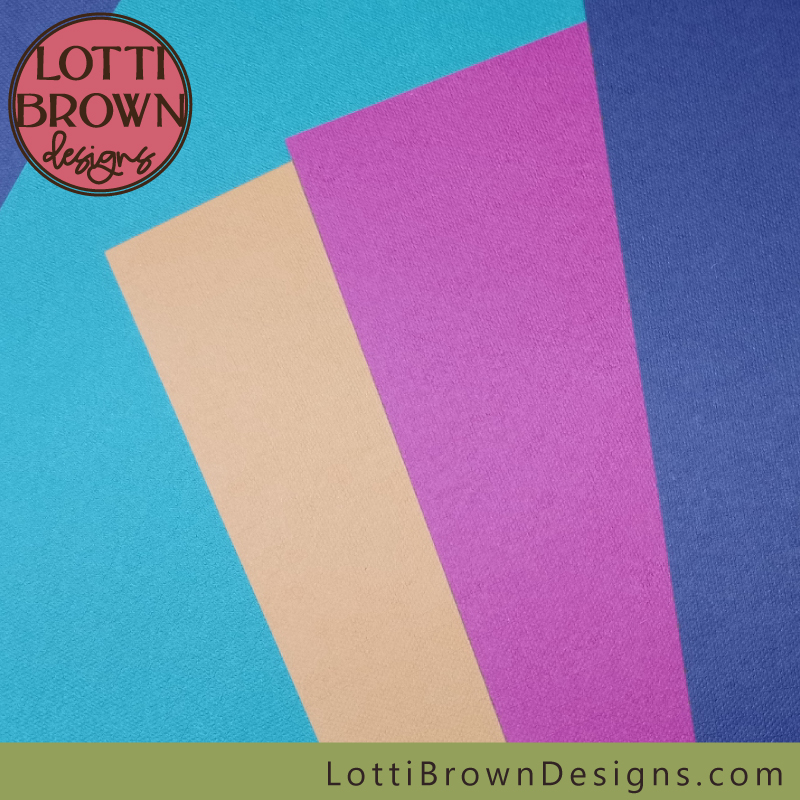 Cricut 'Jewel' cardstock 216gsm 80lb (colours didn't photograph very well under the artificial light - they're much nicer than this in real life) - not all colours are shown
Cricut 'Jewel' cardstock 216gsm 80lb (colours didn't photograph very well under the artificial light - they're much nicer than this in real life) - not all colours are shown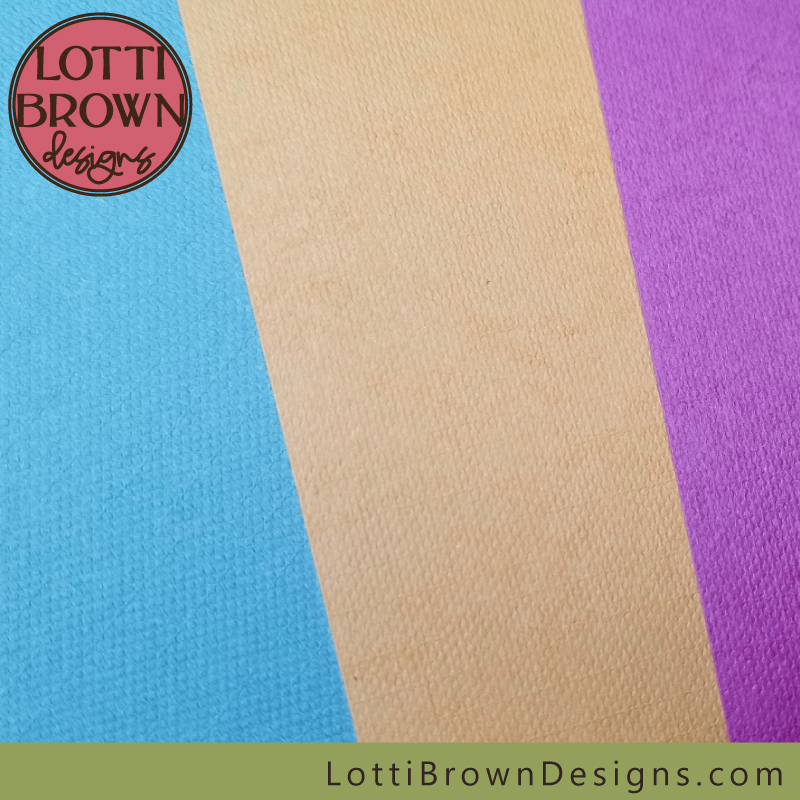 A closer look at the Cricut cardstock texture
A closer look at the Cricut cardstock textureTIP: I bought some of the extra-large Cricut cardstock (approx. 30 x 60cm) and have been trimming off bits to use. I worked out that I could get three sheets, each a little smaller than A4 for size (approx. letter size) from one of the large sheets, which made it more cost effective.
I also like the colour-themed packs from both Sizzix and Cricut, which makes it really easy to create beautiful combinations for your cardstock craft projects.
Getting Heavy with It!
I’ve also used a heavier card – a 300gsm (112lbs) smooth cardstock (sold for cardmaking). This is non-pulpy and cuts well for fairly intricate and detailed cuts, as long as you don’t try to go too small.
I like that it keeps its rigidity well, even when cut and does feel quite sturdy. Set your Cricut to the heavier weight cardstock before cutting this and use your purple or green mat.
I’ve made some nice intricate butterflies with this card, to hang from a thin wire, and also used it for my sunflower papercuts (one shown above) - both cut with the standard default setting for heavyweight card.
I wouldn’t normally select this card for extremely detailed or small cuts, but I would like to try it on the ‘intricate cut’ setting, sometime, to see how it fares.
The brand of heavier cardstock I use with my Cricut is Craft UK Ltd, ‘Premier Collection’ Ivory Smooth 300gsm card (ordered from Amazon UK). They also do different weights and colours, which I intend to try out someday, too.
More Tips for Cutting Cardstock with your Cricut
- The best Cricut blade for cardstock is the standard fine blade (the one that comes with your machine).
- If you’re wondering how to weed cardstock with Cricut - after cutting, I usually use my Cricut weeding tool, while the card is still on the sticky mat, to remove small areas.
- It can sometimes also work well just to peel your cardstock away from your mat (carefully, of course – and more on this in just a moment right below as there's a wrong and a right way to do this) and then clean all the little bits of paper off your mat with your spatula tool. This is much quicker than weeding. It depends on how quickly you’d like to do your weeding and if you actually like weeding – I find it quite relaxing to do, but sometimes, I’m just not in the mood for it. Try both methods and see how you get on.
When you’re removing your cardstock from your Cricut mat, remember to pull the mat away from your cardstock, rather than pull the cardstock off the mat. I do this by popping the clear acrylic sheet (that comes with the mat) over everything (either after it comes out the machine or after weeding) - and then turning the whole thing (mat, cardstock, protective sheet) upside down on the table.
- I then gradually pull back and curl the mat away from the top with one hand, and with the other hand I’m carefully separating the card from the mat and helping those intricate areas very gently off the mat to avoid tearing.
- Removing cardstock from your Cricut mat in this way avoids your cardstock curling, which does happen if you just peel the card straight off the mat – and happened to me the first few times too!
- Don’t forget about the Cricut ‘cardstock for intricate cuts’ setting. You select this as your ‘material’ in Cricut Design Space before cutting. It does take longer to cut, as it cuts each area twice, in exactly the same spot with slightly less pressure as a standard cut, so as not to tear the card with too much pressure – but I’ve found that it does get better results for those intricate cuts.
- This works well with the Cricut cardstock and also the Sizzix cardstock, as I think the setting would be set up as if intended for Cricut’s own cardstock. (Normally for my lightweight smooth white 160gsm card, I just cut it on the normal ‘lightweight card’ setting with default pressure, even when the cut is quite intricate.)
- You do also have the option to increase or decrease the default pressure, both with the standard cardstock settings and the ‘intricate’ cardstock setting. You may need to play around a bit with this to get the right settings for your project and materials. So far, I’ve always kept to the default pressure for my projects, but just tried to select the most suitable material option for my cardstock type.
Tips Summary - Cutting Cardstock with Cricut
My best choices:
- 160gsm smooth white cardstock – for most basic projects and test cuts, including intricate cuts
- Sizzix cardstock or Cricut cardstock – for intricate projects and sturdier or ‘best quality’ projects
Do try other colours and cardstocks to suit your project – I got some lovely variety papers and cardstock from The Range in the UK from their hobby section which have all cut well so far – including a textured glitter paper, metallic effect, marble effect, and marbled-paper effect craft papers, which just add that little extra ‘something’ to your projects, so keep a look out for such goodies to add to your stash.
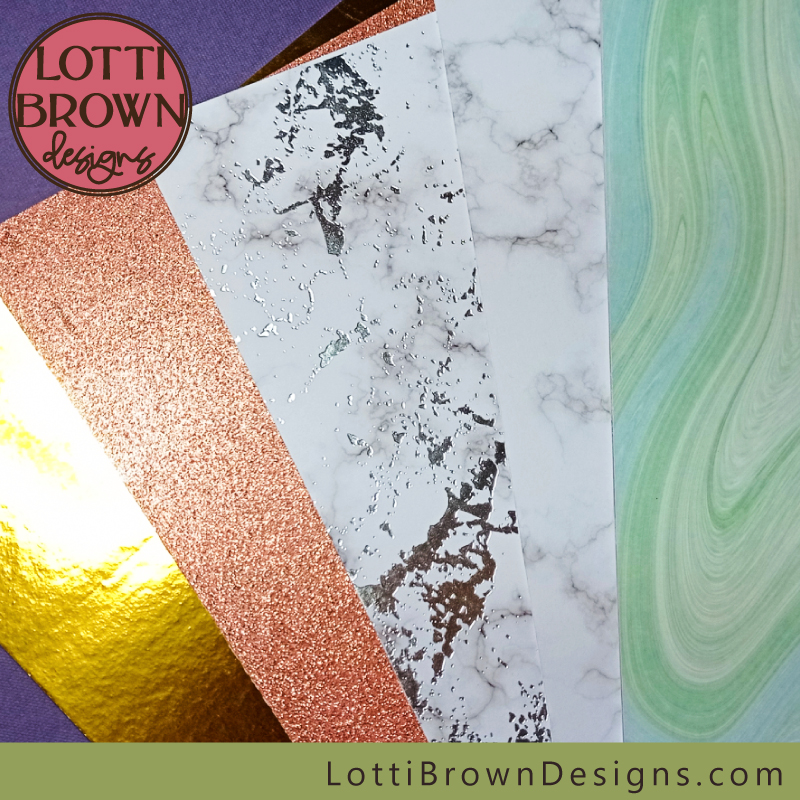 Keep a look out for speciality cardstock and papers to add to your stash!
Keep a look out for speciality cardstock and papers to add to your stash!- Avoid ‘pulpy’ paper or cardstock – we want a nice smooth or solid cardstock that won’t rip or tear as we cut it
- Be aware of the Cricut ‘cardstock for intricate cuts’ setting and try that out for your more intricate projects
- Experiment with changing the default pressure in Cricut Design Space as you send your project to cut (only if you've been having problems)
- Always test first (small project or cut) with materials, especially if you don’t have lots to spare!
- Make sure your mat is clean and sticky still and also make sure your blade is clean and sharp (take it out and clean it carefully by sticking it into a roll of bunched up aluminium foil just a few times to clean it up).
I hope my tips and experiences with cutting cardstock with my Cricut will help you to get the best results with your own cardstock projects.
Happy crafting!
If you'd like more help with using your Cricut, go to this page...
I have some project ideas for your Cricut here...
Printing on Cardstock
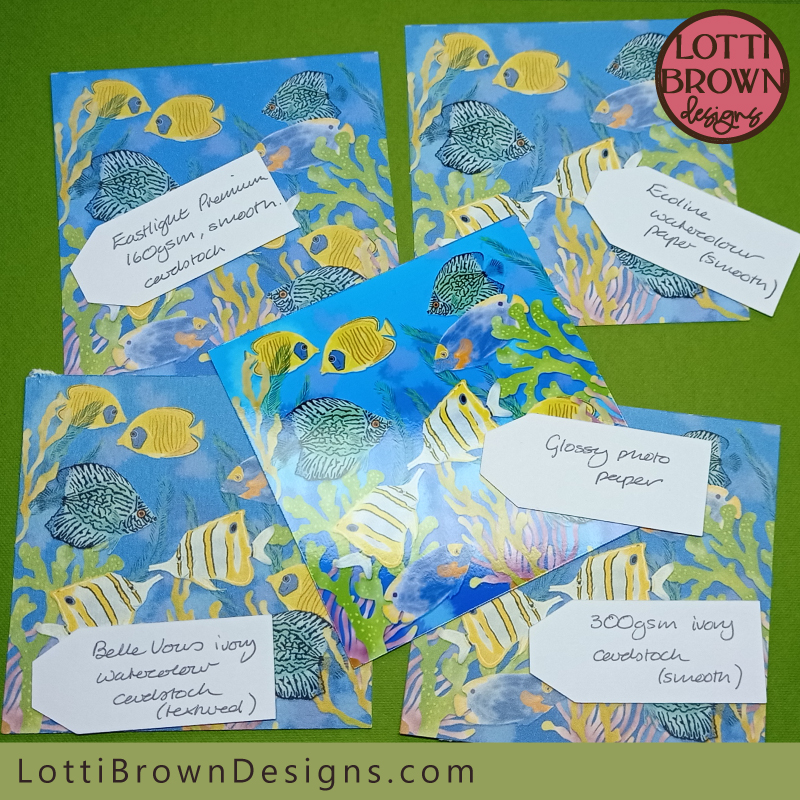 Cardstock test for printing with print then cut
Cardstock test for printing with print then cutIf you're interested in printing onto cardstock (for print then cut or other projects) I've done a (totally unscientific) scientific test to see which cardstocks and papers are best for printing onto - take a look at the test and the results here...
You Might Also Like:
Lotti Brown's Designs & Templates
How-tos...
- How to use SVG cut files for Cricut (also other cut file formats & machines)
Want to keep in touch?
Sign up below for my free email newsletter...
My newsletter is usually sent out once a month (at the end of one month or the start of the following month) and you can unsubscribe any time...
Sign up below...!
Recent Articles
-
Sunflower Art Prints
Mar 31, 25 07:17 AM
Sunflower art prints in rainbow colours - vibrant floral art, framed art prints, fabrics, wallpapers, homewares, accessories... -
March Nature Journal Pages
Mar 28, 25 06:05 AM
Explore my March nature journal pages with me - feeling wintery but some signs of Spring. Get inspired by a real-life nature journal... -
Easter Bunny SVG Paper Decoration
Mar 24, 25 06:35 AM
Easter bunny SVG template to make a pretty paper decoration for Easter with your Cricut or similar cutting machine...
Follow me:
Share this page:

